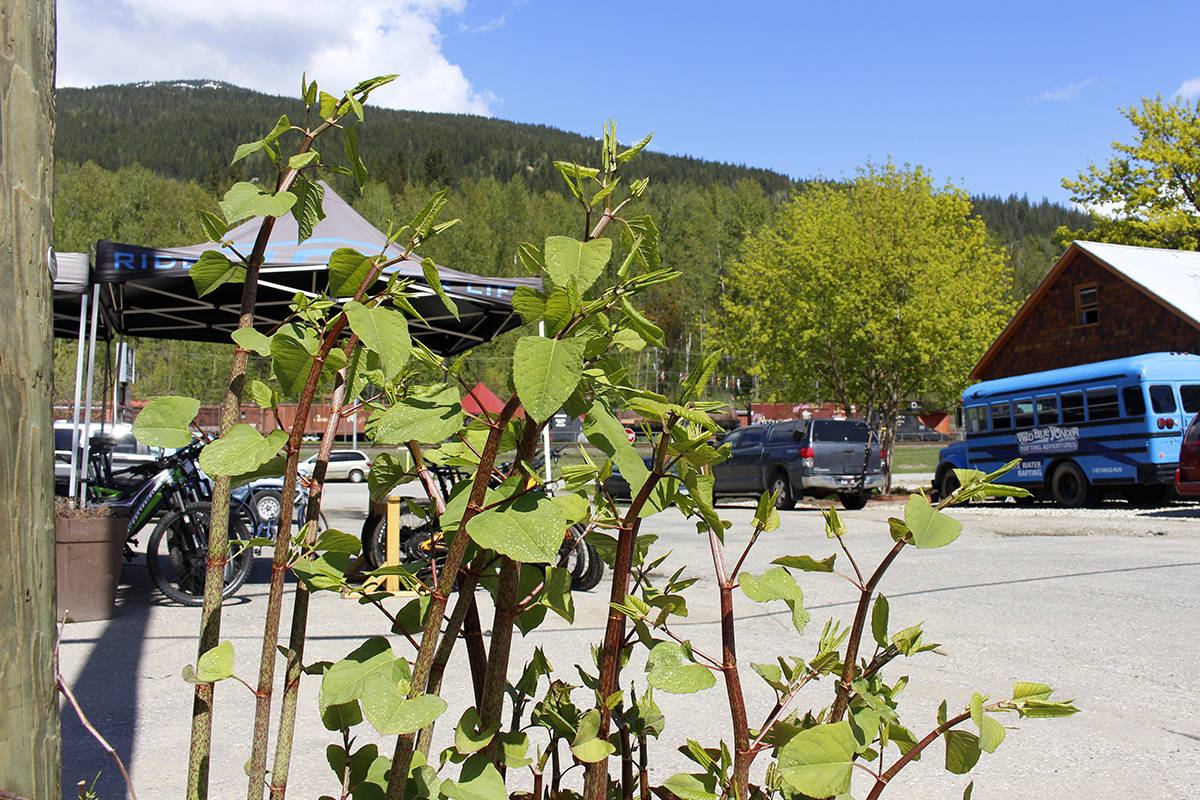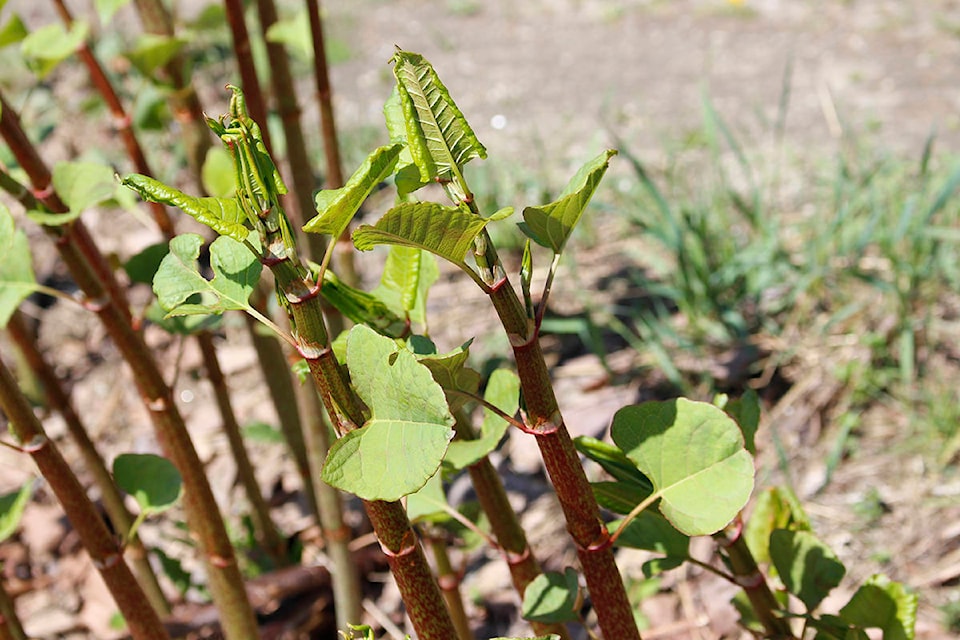Often found sitting on roadsides and peaking through cracks in pavement, knotweeds are a top priority invasive species that can have a destructive effect on property in the Revelstoke area.
In honour of Invasive Species Action month learn all about the weed and how to deal with it.
Due to its sturdy stalks and deep root systems, knotweeds can be devastatingly strong, punching through cement and asphalt as it pops up from the soil. As a result, knotweeds can compromise house foundations and roadways, leading to pricey repairs.
Robyn Hooper, an executive director with Columbia Shuswap Invasive Species Society, says knowing how to identify and treat knotweeds is crucial to ridding the region of the species.
RELATED: Take action against invasive species in the Revelstoke area this month
“Knotweed treatment is happening around the region within the city of Revelstoke, but it’s also happening across B.C. It’s one of the top priorities for control,” explains Hooper. “I think that’s a big piece is when folks understand that this is what we all need to be doing, and then that sort of action might be spurred.”
Commonly referred to as “false bamboo,” knotweeds can be identified by their hollow green stems, large green leaves and small white flowers.
Four species of knotweeds can be found in B.C. — including Japanese knotweed, giant knotweed, Bohemian knotweed and Himalayan knotweed. All four types are similar in their appearance, biology, impacts and distribution.
The species originates from Asia and was introduced to North America as an ornamental plant often mistakenly planted in gardens due to it’s bamboo-like appearance. Through sharing of cuts between gardeners, knotweeds have spread from garden-to-garden, damaging landscapes as they pop up.
Once they are established, knotweeds can grow at a rate of up to 4 cm a day.
Though present in Revelstoke, the spread of knotweeds has been relatively slow in the region when compared to coastal locations.
“You’ll definitely see it around Revelstoke, it’s fairly common, but it’s still not widespread enough to deem it uncontrollable,” says Hooper. “We’re still at a level here in Revelstoke that can be controlled annually, and it takes about three-to-five years.”
Pulling, digging or cutting knotweeds is greatly discouraged, as small fragments can create whole new plants and increase spreading.
Instead, herbicide treatment is recommended in dealing with the species.
“We don’t often encourage that as a first priority, but this is a species that can’t be killed with many other options,” says Hooper. ” And it can be very safe as well when it is a targeted herbicide, so it’s just right onto the plant and that herbicide will go right into the root system and kill only that plant.”
In place of planting knotweeds in your garden, the Invasive Species Council of B.C. recommends native red-osier dogwood or exotic peegee hydrangea to add a similar aesthetic.
For more information on knotweeds and other invasive species treatment, visit columbiashuswapinvasives.org.

